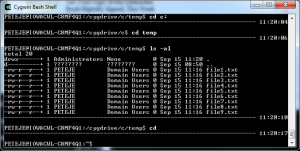I know it is 2014 and many people have already dropped their landline phone. But I have two kids who aren’t yet old enough to have a mobile phone and I want to make sure that they can use a traditional phone in our house if the need should arise. This February 21, 2014, I fully activated my Internet based home phone system which replaced my traditional CenturyLink phone service. My Internet based phone service is composed of an OBi device to interface with my existing phone handset, Twilio for incoming calls, and Callcentric for outgoing calls.
Callcentric is a BYOD (Bring Your Own Device) Internet phone provider. They can provide incoming and outgoing phone service using your own telephone adapter. One of the things that I like about Callcentric is the ability to use a pay-per-minute phone plan. Since we typically use our mobile phones it currently doesn’t make financial sense to buy a lot of VOIP minutes. For outgoing calls, Callcentric charges $0.0198 per minutes to USA and Canada. Callcentric also provides 911 services at $1.50 per month.
I could use Callcentric for incoming calls as well. But I am using Twilio to create an incoming call voice application. I have had a little experience in automated telephone software. In my first job out of college I worked at MCI on 1-800-COLLECT. As part of that job I worked on a team the developed collect messaging and we patented the idea in US 5787150 A: Method and system for automated collect call messaging. Back then, the software was written on an AIX Unix system in C and interacted directly with the telco switch. Now with Twilio you can create a REST application that Twilio invokes when it has telephony events. The application that I developed allows the caller to choose to connect to my mobile phone directly, my wife’s mobile phone directly, or connect with my home phone. This application was written in Python and is hosted on Google App Engine. I have created a GitHub repository Mytelco to host an example of the application. When the incoming caller chooses to connect to one of our cell phones the outgoing connection is a voice call. When the incoming caller chooses to connect to our home phone the outgoing connection is a SIP call.
Here is the current cost breakdown of the system:
Old System
- CenturyLink local phone service: $47.46 per month
New System
- One time costs
- Callcentric
- 911 service: $1.50 per month
- Outgoing calls: $0.0198 per minute
- Twilio
- Phone Number: 2 x $1.00 = $2.00 per month
- Incoming call: $0.01 per minute
- Outgoing connection voice: $0.02 per minute
- Outgoing connection SIP: $0.005 per minute
- Google App Engine
- usage based, currently free
